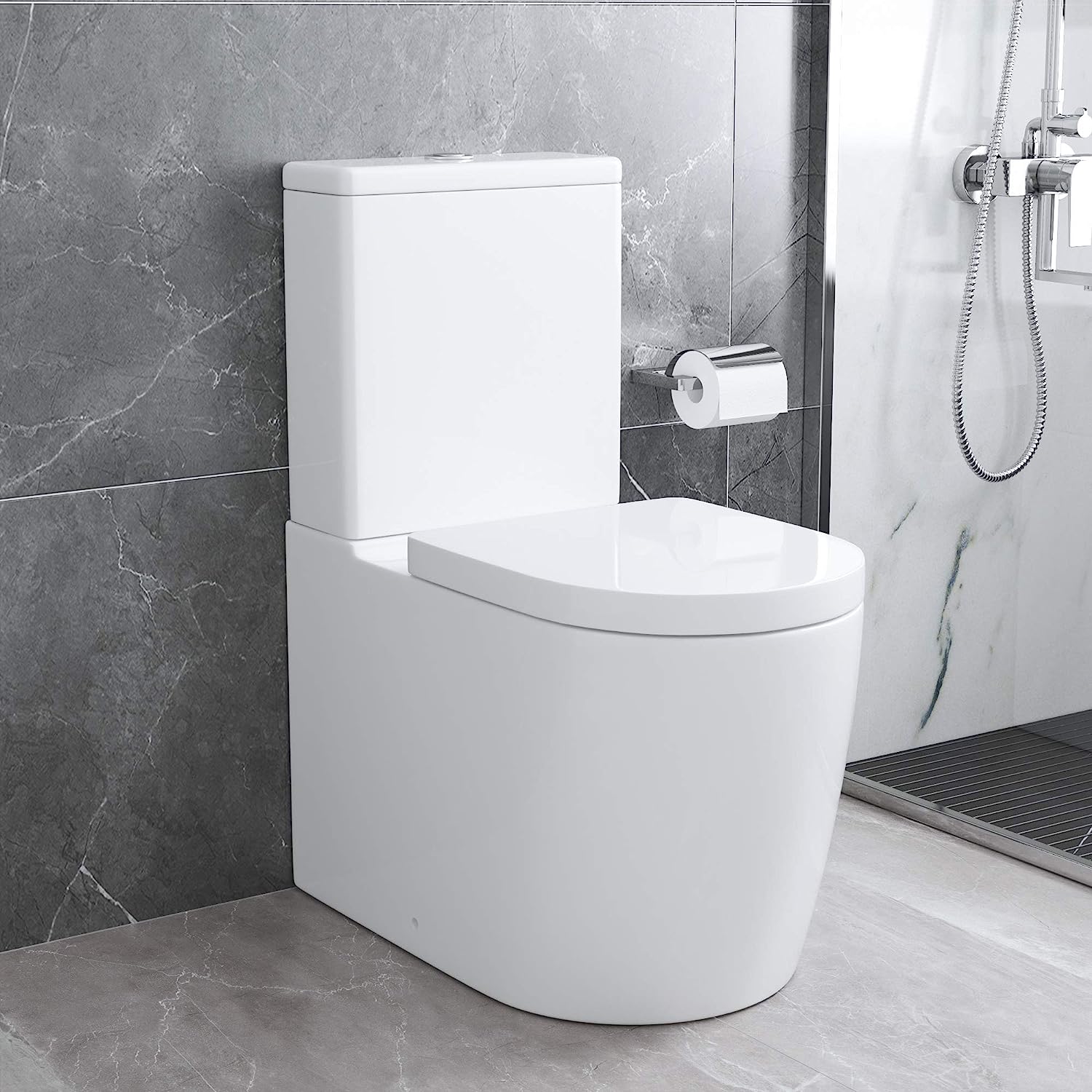

Articles
How To Measure A Toilet Height
Modified: October 20, 2024
Learn how to measure the height of a toilet with our informative articles on toilet measurements. Get a step-by-step guide on determining the perfect toilet height for your needs.
(Many of the links in this article redirect to a specific reviewed product. Your purchase of these products through affiliate links helps to generate commission for Storables.com, at no extra cost. Learn more)
Introduction
Choosing the right toilet height is an important consideration when it comes to bathroom comfort and accessibility. Whether you are replacing an old toilet or looking to install a new one, knowing the exact measurements of the toilet height is crucial. This information is particularly relevant for individuals with mobility issues, disabilities, or those who simply prefer a specific height for comfort reasons.
In this article, we will guide you through the process of measuring a toilet’s height. We will explain why it is essential to measure the height accurately and provide step-by-step instructions on how to do so. Additionally, we will explore the different options available in terms of toilet height and discuss the benefits and considerations associated with each option.
By the end of this article, you will have a clear understanding of how to measure a toilet’s height and the factors to consider when choosing the right height for your bathroom.
Key Takeaways:
- Measure toilet height for comfort, accessibility, and safety. Understand standard, comfort, and ADA-compliant height options to choose the best fit for your bathroom and individual needs.
- Accurately record toilet measurements for future reference. Prepare the area, use the right tools, and consult professionals for a comfortable and accessible bathroom experience.
Why Measure Toilet Height?
Measuring the height of a toilet before making a purchase or performing any modifications is essential for several reasons. Let’s explore why it is important to measure the toilet height:
- Comfort: The height of a toilet greatly affects the comfort and ease of use, especially for individuals with limited mobility or physical disabilities. A toilet that is too low can make it challenging to sit down and stand up, causing discomfort and potential strain on the muscles and joints. On the other hand, a toilet that is too high can also lead to discomfort and may require users to have their feet dangling, resulting in poor posture. By measuring the toilet height, you can ensure optimal comfort for everyone using the bathroom.
- Accessibility: Accessibility is a crucial consideration, particularly in bathrooms where individuals with disabilities or mobility issues need to use the facilities. Having a toilet at the appropriate height can make it easier for those individuals to sit or transfer onto the toilet seat. By accurately measuring the toilet height, you can ensure that the toilet meets accessibility standards and provides a safe and comfortable environment for all users.
- Fit: Measuring the height of a toilet is essential to ensure that it fits properly in your bathroom space. If you are replacing an existing toilet, measuring its height will help you find a suitable replacement that aligns with your current plumbing and installation setup. Furthermore, if you are renovating or remodeling your bathroom, knowing the toilet height can help you plan the layout and design, ensuring that all fixtures and components work harmoniously together.
- Compatibility: Different toilets come in various heights, including standard height, comfort height, and ADA-compliant height. Measuring the toilet height allows you to determine which height option best suits your needs and preferences. By selecting the right toilet height, you can ensure that it meets your specific requirements and provides a comfortable and user-friendly experience.
- Safety: Accuracy in measuring the toilet height is crucial for safety reasons. A toilet that is too high or too low can pose potential hazards, especially for individuals with balance or stability issues. By measuring the toilet height correctly, you can ensure that it is at an appropriate level to prevent any accidents or injuries.
Overall, measuring the toilet height is essential for comfort, accessibility, fit, compatibility, and safety reasons. It allows you to make informed decisions when selecting a toilet and ensures that the bathroom is comfortable and accessible for all users.
Necessary Tools and Materials
Before you start measuring the height of your toilet, it’s important to gather the necessary tools and materials. Here’s what you’ll need:
- Tape Measure: A tape measure is an essential tool for accurately measuring the height of the toilet. Make sure you have a reliable tape measure with clear markings.
- Notebook and Pen: Having a notebook and pen handy will allow you to record your measurements and keep track of them for future reference. This will come in handy when comparing different toilet options or if you need to consult with a professional.
- Step Stool (optional): If your toilet is higher than average or if you have difficulty reaching the top of the tank, a step stool can be helpful for stability and reaching the measurement points.
- Personal Protective Equipment (PPE): While not directly related to measuring the toilet height, it’s always a good idea to have some personal protective equipment, such as gloves or safety glasses, especially if you plan on removing the toilet seat or performing any maintenance tasks.
By having these tools and materials ready, you’ll be well-equipped to accurately measure the height of your toilet without any hassle.
Step 1: Preparation
Before you begin measuring the height of your toilet, it’s important to prepare the area and ensure a safe and accessible environment. Follow these steps to properly prepare for the measurement process:
- Clean the Toilet: Start by thoroughly cleaning the toilet, including the bowl, seat, and tank. This will ensure that you have a clear view of the measurement points and prevent any debris from interfering with the measurements.
- Empty the Tank: If possible, empty the water from the toilet tank to make it easier to access the top of the tank. You can do this by turning off the water supply valve, flushing the toilet to drain the water, and using a towel or sponge to soak up any remaining water.
- Remove the Toilet Seat (optional): If you prefer, you can remove the toilet seat to accurately measure the bowl height. Most toilet seats are attached using plastic or metal bolts that can be unscrewed using a wrench or pliers. Place the screws and bolts in a safe location to avoid misplacing them.
- Ensure Proper Lighting: Adequate lighting is crucial for accurate measurements. Make sure the bathroom is well-lit, or use a flashlight if necessary, to clearly see the measurement points.
- Clear Surrounding Obstacles: Remove any objects or accessories that may obstruct the measurement process. This includes bathroom rugs, trash cans, or other items that may be near or around the toilet.
- Wear Protective Gear: Depending on the level of maintenance or modifications you plan to undertake, consider wearing personal protective equipment (PPE) such as gloves or safety glasses for your safety and hygiene.
By following these preparation steps, you’ll create a suitable environment for accurately measuring the height of your toilet. Take your time to ensure that everything is in order before proceeding to the next steps.
Step 2: Measuring the Bowl Height
Measuring the bowl height is an important part of determining the overall height of the toilet. Follow these steps to measure the bowl height accurately:
- Position the Tape Measure: Start by positioning the tape measure at the base of the toilet bowl. Ensure that the tape measure is aligned vertically with the floor.
- Extend the Tape Measure: Gently extend the tape measure upwards along the inside edge of the toilet bowl. Stop at the highest point of the bowl where it meets the seat or the point where the seat hinges are attached.
- Read the Measurement: Note down the measurement shown on the tape measure where the highest point of the toilet bowl intersects with the tape. This measurement represents the bowl height of your toilet.
- Record the Measurement: Write down the bowl height measurement in your notebook for reference. Include the unit of measurement (usually in inches or centimeters) to ensure accuracy.
It’s important to measure the bowl height precisely, as it plays a significant role in determining the overall comfort and accessibility of the toilet. By carefully following these steps, you can determine the exact bowl height of your toilet.
When measuring a toilet height, start from the base to the top of the seat. This will give you an accurate measurement for replacement or installation.
Read more: How High Is Chair Height Toilet
Step 3: Measuring the Seat Height
In addition to measuring the bowl height, it’s crucial to measure the seat height of the toilet. The seat height is the distance from the floor to the top surface of the toilet seat. Follow these steps to measure the seat height accurately:
- Position the Tape Measure: Position the tape measure vertically, aligning it with the outside edge of the toilet bowl.
- Extend the Tape Measure: Extend the tape measure upwards until it reaches the highest point of the toilet seat.
- Align the Tape Measure: Make sure that the tape measure is parallel to the floor for accurate measurement.
- Read the Measurement: Note down the measurement shown on the tape measure where it intersects with the top surface of the toilet seat. This measurement represents the seat height of your toilet.
- Record the Measurement: Write down the seat height measurement in your notebook and include the unit of measurement. This recorded measurement will be useful when comparing different toilet options or consulting with professionals.
Accurately measuring the seat height is essential for ensuring comfort and accessibility. By following these steps, you will have the exact seat height measurement to consider when choosing the right toilet for your needs.
Step 4: Measuring the Total Height
Measuring the total height of the toilet is crucial to determine its overall size and compatibility with your bathroom space. Follow these steps to accurately measure the total height of your toilet:
- Position the Tape Measure: Position the tape measure vertically, starting from the base of the toilet on the floor.
- Extend the Tape Measure: Gently extend the tape measure upwards along the outside edge of the toilet tank.
- Continue to the Highest Point: Extend the tape measure all the way to the highest point of the toilet, which may be at the top of the tank or the top of the flush handle.
- Read the Measurement: Note down the measurement shown on the tape measure where it reaches the highest point of the toilet. This measurement represents the total height of your toilet.
- Record the Measurement: Write down the total height measurement in your notebook, along with the unit of measurement. This information will be useful when comparing different toilet heights or determining the compatibility of the toilet with your bathroom space.
Measuring the total height of the toilet is essential for ensuring that it fits properly in your bathroom and meets any height requirements you may have. By following these steps, you will have an accurate measurement of the total height of your toilet.
Step 5: Recording the Measurements
Recording the measurements of your toilet height is essential for future reference and comparison when selecting a new toilet. Follow these steps to properly record and organize your measurements:
- Notebook: Open your notebook or a dedicated sheet of paper where you will document the measurements.
- Title and Date: At the top of the page, write the title “Toilet Height Measurements” along with the date, so you can easily identify when the measurements were taken.
- Bowl Height: Write down the measurement you obtained for the bowl height, including the unit of measurement (e.g., inches or centimeters).
- Seat Height: Record the measurement for the seat height, specifying the unit of measurement.
- Total Height: Note down the measurement for the total height of the toilet, including the appropriate units.
- Additional Information: If there are any additional notes or observations you want to include, such as the model or brand of the toilet, make a note of it in the same section.
- Keep it Organized: In case you have multiple toilets in your home or need to compare different measurements, create a separate section or page for each toilet to maintain clarity and organization.
- Secure the Information: Store your notebook or measurement sheets in a safe and easily accessible place. This will allow you to refer back to the measurements whenever needed, whether you’re shopping for a new toilet or consulting with a professional.
By recording your toilet height measurements accurately and keeping them organized, you’ll have a valuable resource to consult when making decisions related to your bathroom fixtures.
Step 6: Understanding Toilet Height Options
Understanding the different toilet height options available can help you make an informed decision when selecting a toilet that best suits your needs and preferences. Here are the common toilet height options to consider:
- Standard Height: Standard height toilets typically have a bowl height of around 15 inches (38 cm). These toilets are the most common and are suitable for individuals who do not require any special accommodations.
- Comfort Height: Comfort height toilets, also known as universal height or chair height toilets, have a higher bowl height compared to standard toilets. The bowl height is around 17-19 inches (43-48 cm), which is similar to the height of a regular chair. These toilets are recommended for individuals with mobility issues or disabilities as they make it easier to sit down and stand up from the toilet.
- ADA-Compliant Height: ADA-compliant toilets meet the requirements set by the Americans with Disabilities Act (ADA) for accessibility. These toilets typically have a bowl height of around 17-19 inches (43-48 cm) and feature additional design elements to cater to individuals with disabilities or limited mobility.
When considering the height of a toilet, it’s important to remember that the seat height may vary depending on the toilet seat design and its thickness. Therefore, it’s advisable to check the specifications provided by the manufacturer to ensure you choose the appropriate toilet height option for your specific needs.
Factors to consider when selecting a toilet height option include the individual’s height, mobility requirements, and personal comfort. If you are unsure which height option would be best for your situation, consulting with a professional or discussing it with a bathroom specialist can provide valuable guidance.
Understanding the different toilet height options ensures that you select a toilet that not only meets your comfort needs but also enhances the accessibility and usability of your bathroom space.
Read more: What Is Ada Toilet Height
Conclusion
Measuring the height of a toilet is an important step in choosing the right toilet for your bathroom. It ensures comfort, accessibility, and compatibility with your space. By following the step-by-step process outlined in this article, you can accurately measure the bowl height, seat height, and total height of your toilet. Recording these measurements in a notebook or a dedicated sheet helps keep the information organized and easily accessible for future reference.
Understanding the various toilet height options, such as standard height, comfort height, and ADA-compliant height, allows you to make an informed decision based on your specific needs and requirements. Whether you are looking for optimal comfort, improved accessibility, or compliance with accessibility guidelines, knowing the different height options helps you choose the right toilet that suits your preferences.
It is essential to take factors like personal comfort, accessibility, safety, and compatibility into consideration when selecting the height of a toilet. By doing so, you create a comfortable bathroom environment that caters to everyone’s needs, including individuals with mobility challenges or disabilities.
Remember, when in doubt, consult with professionals or bathroom specialists to ensure you make the right decision. They can provide valuable insights and recommendations based on their expertise and experience.
In conclusion, measuring the height of a toilet is an important step in achieving a functional and comfortable bathroom. By understanding the options available and accurately recording the measurements, you can confidently select a toilet that meets your specific requirements and enhances your overall bathroom experience.
Now that you've mastered measuring toilet height, why stop there? Dive deeper into bathroom knowledge with our guide on "toilet dimensions" to ensure your fixtures fit perfectly. Or, if you're planning bigger changes, our detailed breakdown on "bathroom renovation" timelines will help you plan effectively, making sure no detail is overlooked. Both articles are packed with practical tips and insights to make your next project a breeze.
Frequently Asked Questions about How To Measure A Toilet Height
Was this page helpful?
At Storables.com, we guarantee accurate and reliable information. Our content, validated by Expert Board Contributors, is crafted following stringent Editorial Policies. We're committed to providing you with well-researched, expert-backed insights for all your informational needs.
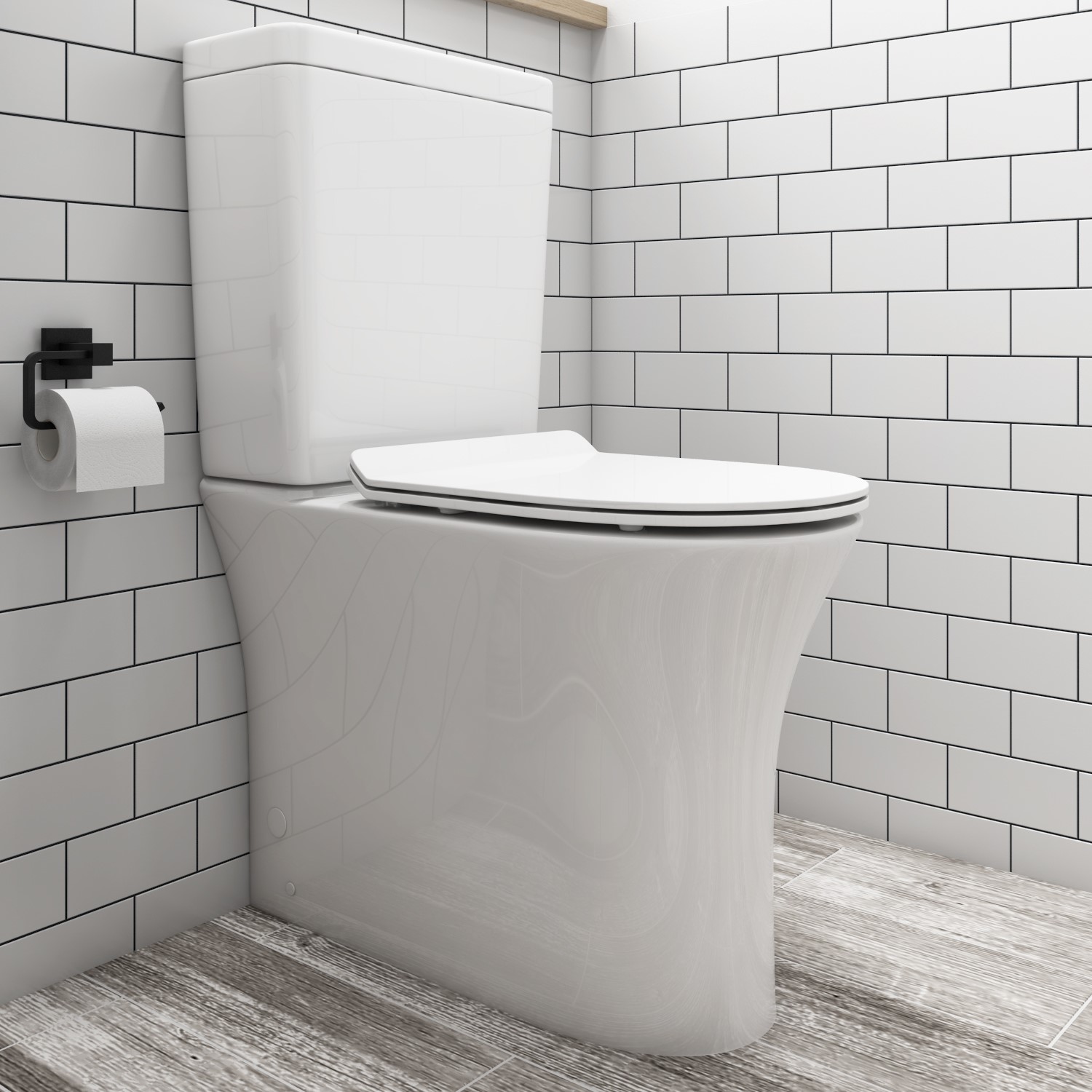

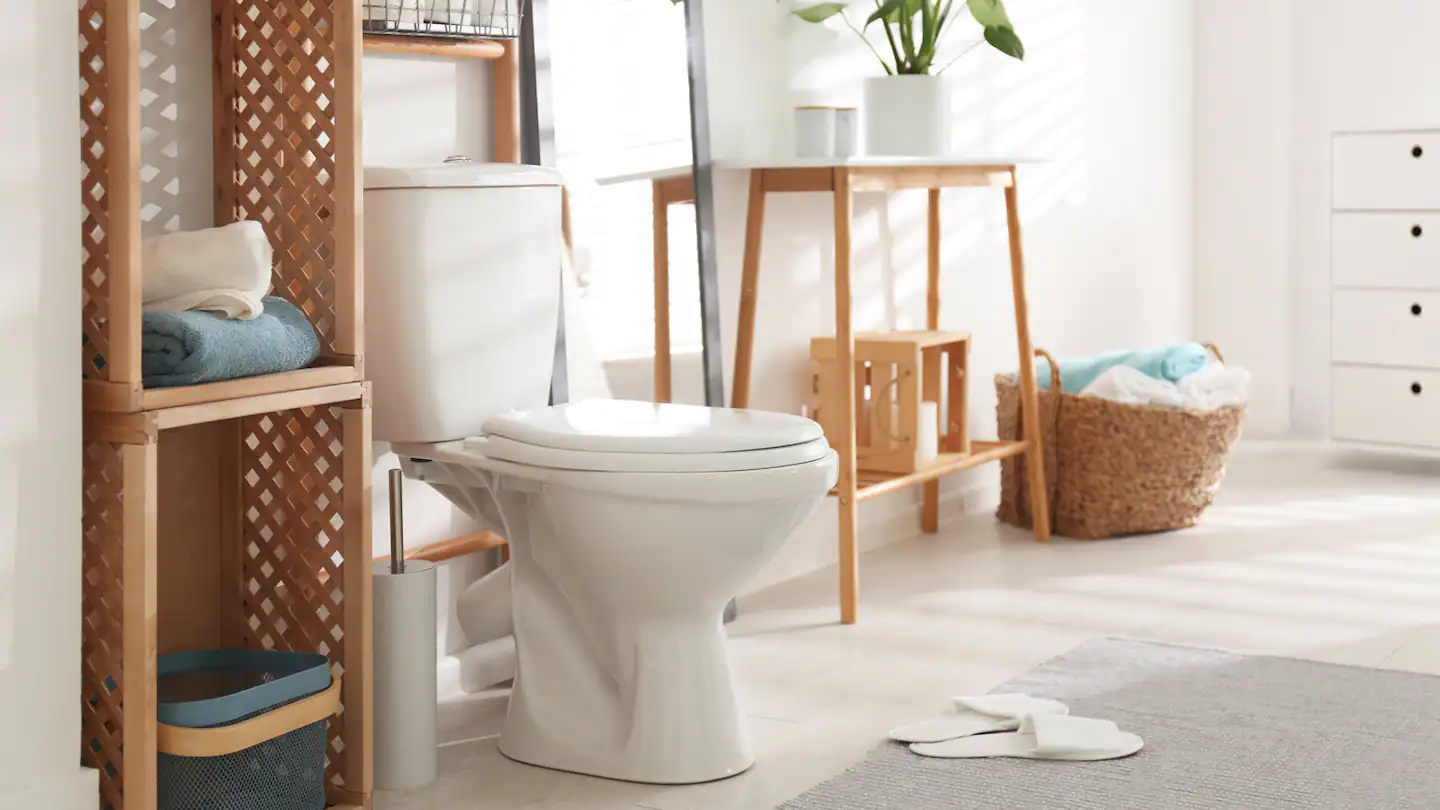
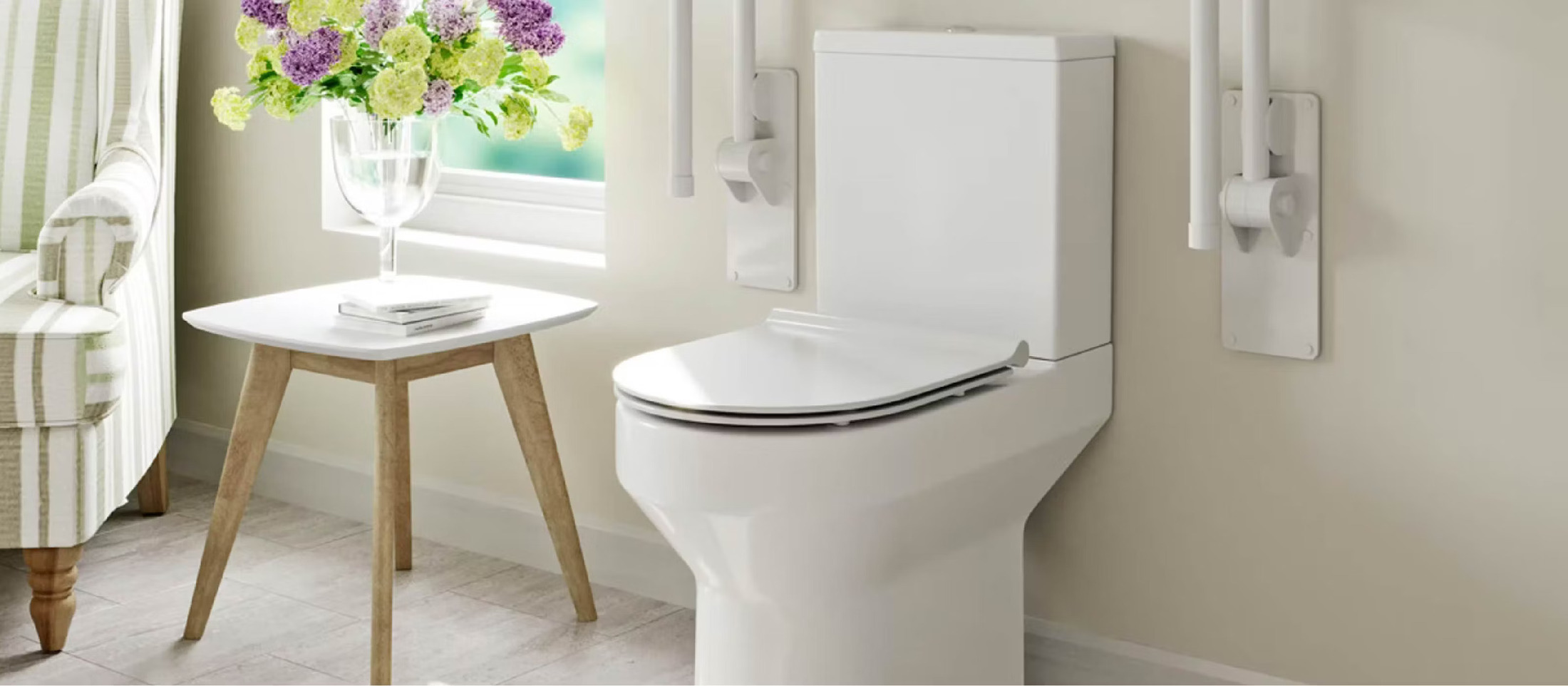
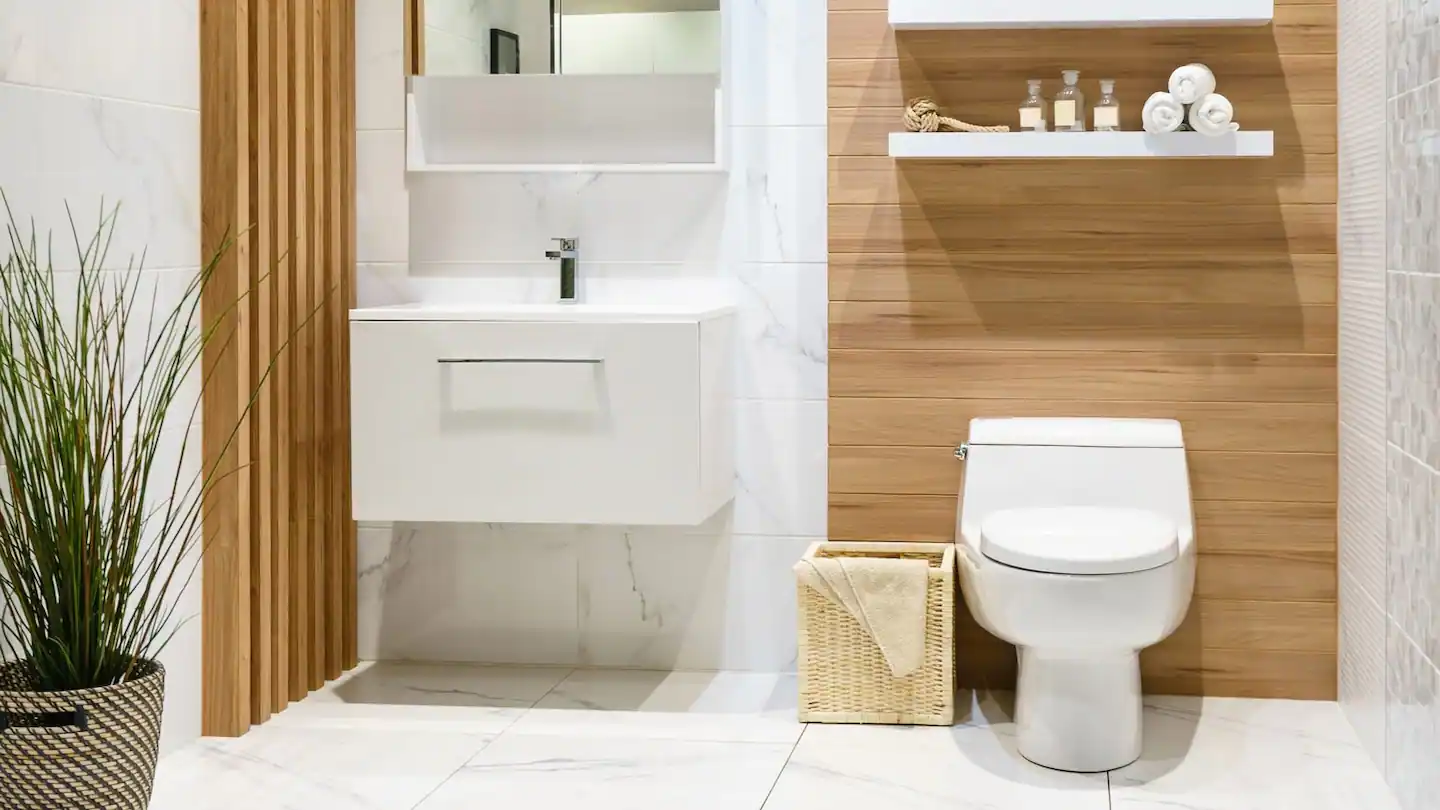
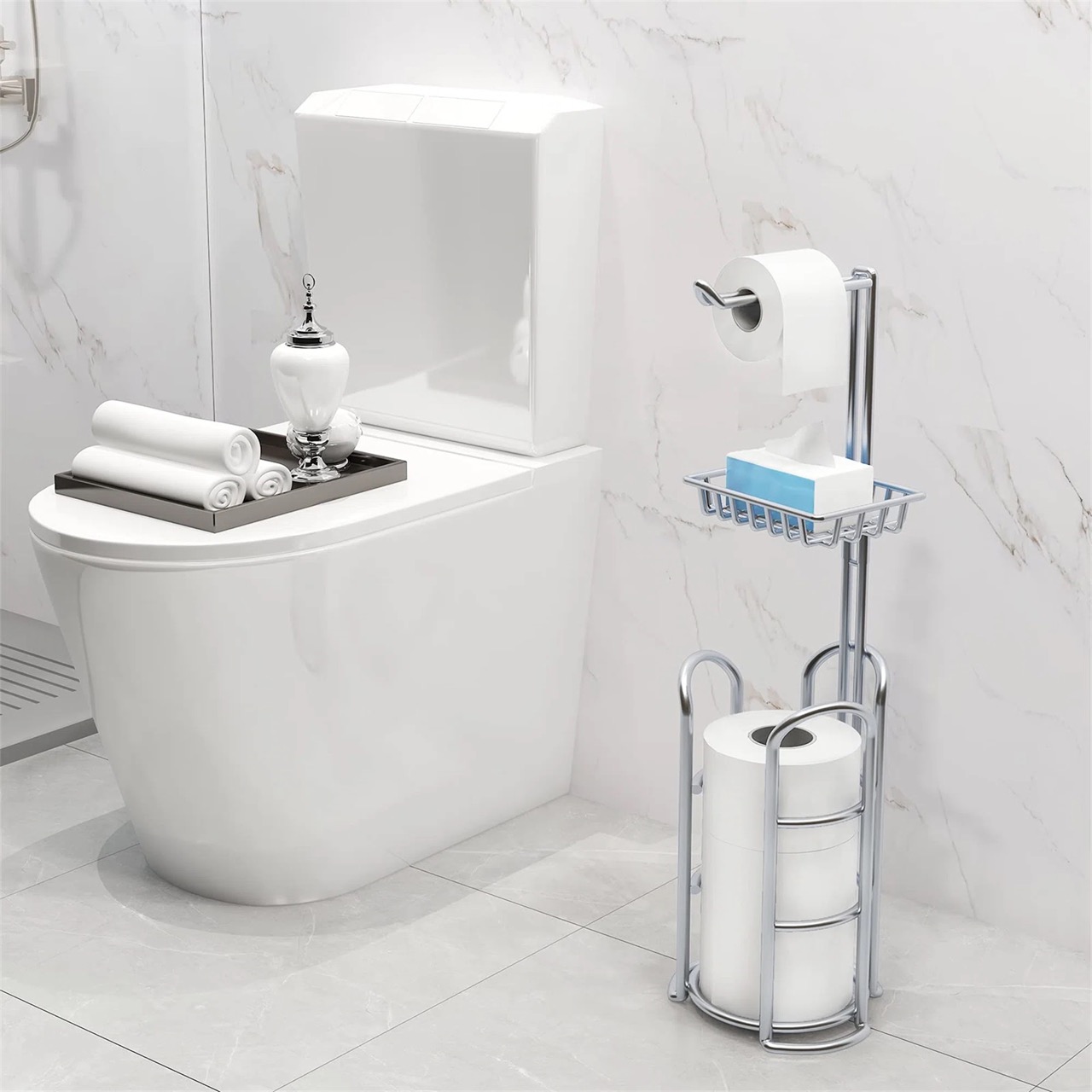

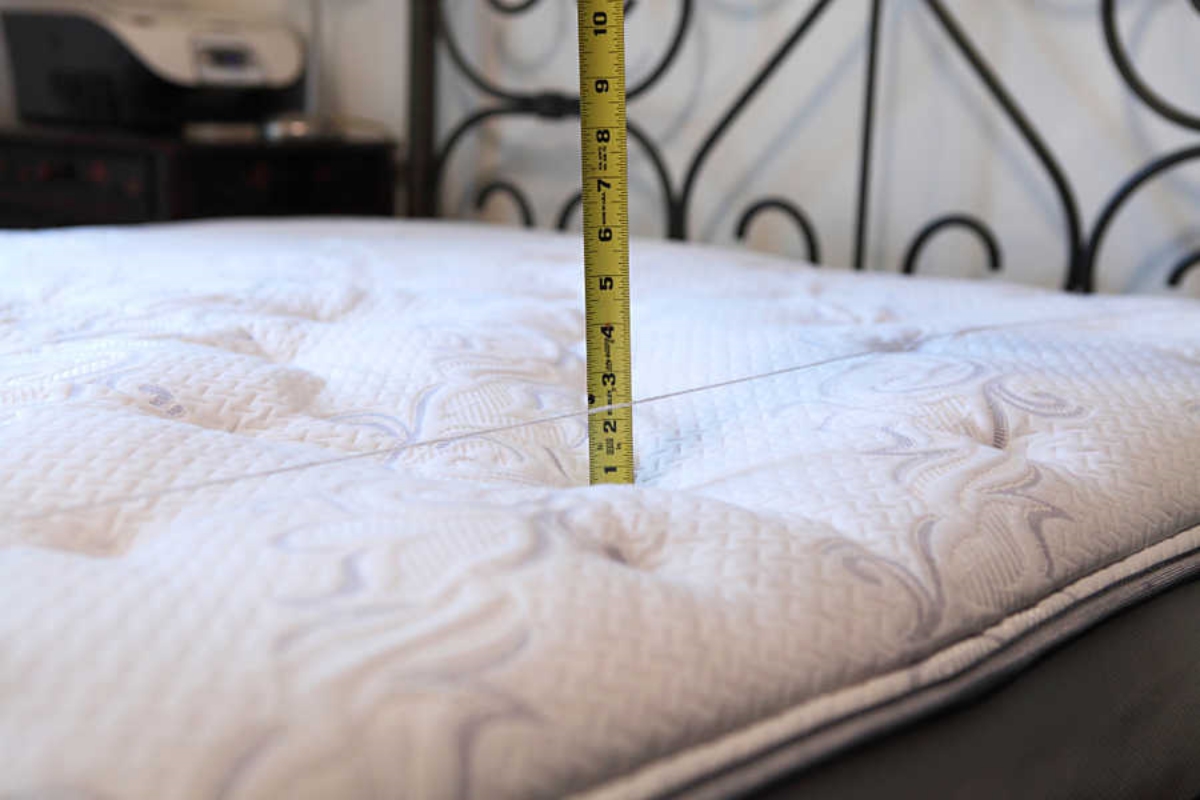


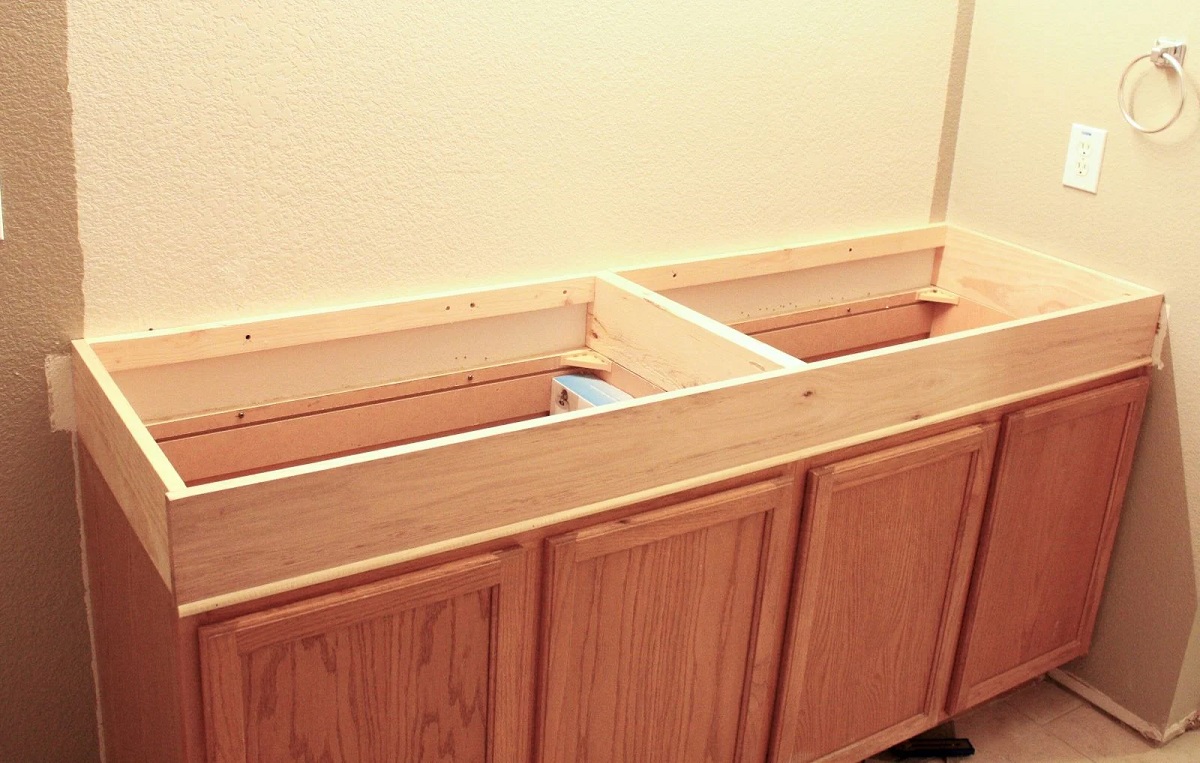



0 thoughts on “How To Measure A Toilet Height”